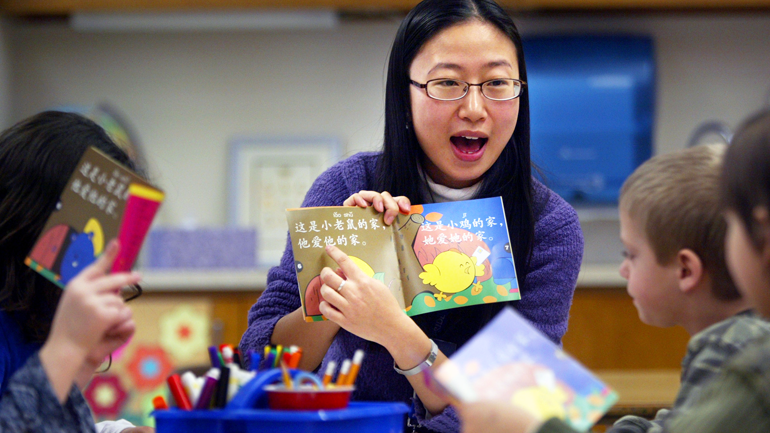
In the first part of this article, we looked at the things you need to do before you get in touch with a teacher or school. Then, in the second part we looked at how to evaluate a teacher or school to see how they fit your needs. In this third part, we're going to look at factors to take into account when choosing what teacher to hire or class to enroll in.
What skills matter?
You will find that many programs emphasize on one or two skills over the others.
How are the goals for each skill determined at different ages and levels? Is there a different program for native speaking children versus Chinese-as-second-language children? How do these instructional priorities fit with your goals? Is there flexibility in the program to meet your needs?
Learning the writing system is typically emphasized sometimes to the exclusion of other skills. It should be questioned in Chinese-as-second-language (CSL) programs. Although all four skills – listening, speaking, reading and writing need to be taught, the last two will take significantly more time to develop.
Depending on the age and language background of your child, he or she may not be developmentally ready to start work on literacy before learning to think and speak in the language.
A heritage learner who has significant language exposure at home can begin literacy work much earlier while acquiring new vocabulary. For older students and adults, an emphasis on writing will prepare the student to take standardized exams to demonstrate proficiency.
Ask about how the methodological emphasis aligns with standardized exams. Will you be prepared to take the exam you wish to take? Tackling all four skills at the same time is a complex task in any language. In Mandarin, it is a particular challenge given the time needed to learn to read and write characters.
Phonetic systems
A second concern is the use of phonetic systems to teach pronunciation. There are two main systems in use – pinyin 拼音 and Bopomofo. Both phonetic systems have advantages and disadvantages. All Mandarin students should eventually learn pinyin but not necessarily as the first step.
For young CSL children, it is important to develop strong phonemic awareness in their first language (English or other language using the Roman alphabet) before adapting the same alphabet as an aid to learn another language. A good benchmark is to teach pinyin after a student reads at the 3rd grade level in English (or other language using the Roman alphabet). Otherwise, pinyin can and does cause phonemic confusion. Therefore, children below this age should only be taught characters or the zhuyinfuhao system rather than the pinyin system.
For those asking "why should I learn pinyin," the answer is primarily applicable to students above the beginning level or older students (above 3rd grade). Pinyin is the most widely accepted system for transliterating Mandarin Chinese worldwide. It is also one of the easiest to use in typing Mandarin on an electronic device (computer, cell phone or other devices).
All these factors do not mean that pinyin is an efficient or even useful system for learning to pronounce or read Mandarin Chinese. There are multiple ways to teach Mandarin pronunciation, pinyin is only one of these. However, when it comes to input for electronic devices, pinyin is a clear leader in terms of ease, frequency of use among devices and programs, and world-wide standardization.
Simplified or Traditional characters
What is better Simplified or Traditional characters? There is no correct answer to the question. Starting with either is fine. Many teachers will have adamant views on this question but in reality if you and your child study Chinese for an extended period, you will be exposed to both and will need to develop some proficiency with both character sets.
Is one really easier than the other? Yes and no. Traditional characters are easier to see the history and understand their development over time which can be an aid in learning to recognize them. Simplified characters are easier to learn to write.
Both require substantial time to learn to read, type and more time to write from memory by hand. The time required to learn to read and/or write Chinese characters is substantially longer than that required to learn to comprehend and to correctly use words in conversation. Depending on your personal goals, the choice of characters with either matter or make no difference.
It should not typically be the criteria for selecting a teacher or school.
In the fourth and final part of this article, we will continue looking at specific skills or elements of learning that you might want to consider before selecting teacher or school.



 闽公网安备 35020302035673号
闽公网安备 35020302035673号
0 responses on "How to choose a teacher for your child to learn Chinese (3)"